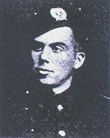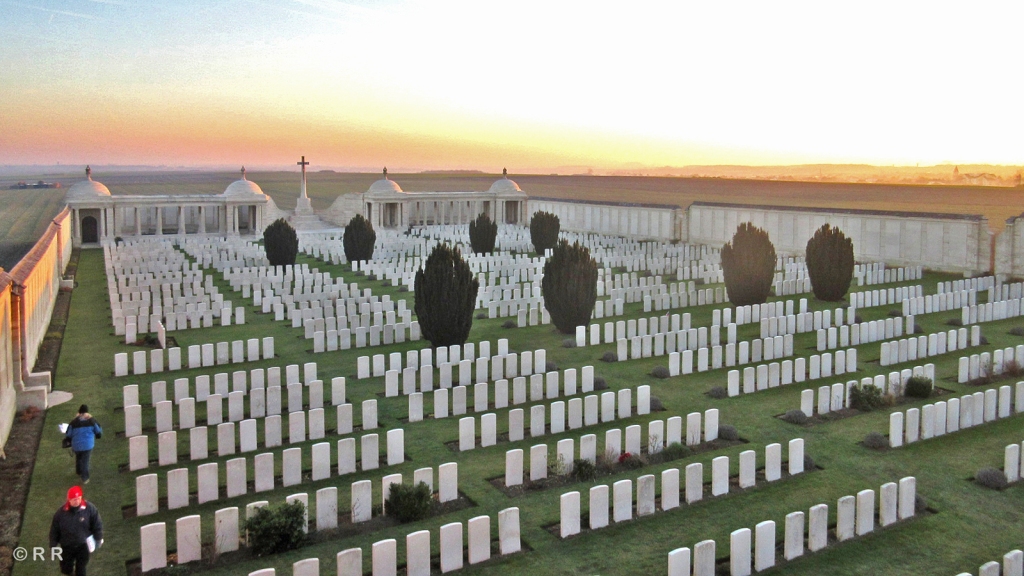- See George Alexander Sutherland’s entry on the Board of Trade’s Ancestry public tree.
- This information updates the group’s previous research published on the former DTI website (now archived by the National Archives).
- Do you have any more information about George Alexander Sutherland? If so the War Memorial Research Group would love to hear from you
Name recorded on Board of Trade Memorial: G. A. Sutherland
Born: 17 September 1886, Hammersmith, London, England
Date of Death: 13 October 1915
Age at death: 29
Service, Regiment, Corps, etc: London Regiment
Unit, Ship, etc: 14th Battalion (London Scottish)
Enlisted: 9 September 1914, Westminster
Rank: Private (Service No: 3238)
Decorations: WW1 Service Medals (Victory Medal, British War Medal and 1915 Star)
War (and theatre): WW1 (France and Flanders)
Manner of Death: Killed in Action (KIA)
Family Details: Son of Alexander G and Mary (nee Rugg) Sutherland of Bower, Caithness
Residence: London
Home Department: Board of Trade – Patent Office
Civilian Rank: Abstractor, Assistant Clerk
Cemetery or Memorial: Loos Memorial (Panel 132); Board of Trade War Memorial; Patent Office Memorial 1914-1918 now at Concept House, Newport, Wales; Scottish National War Memorial at Edinburgh Castle; De Ruvigny’s Roll of Honour 1914-1918;
Biography:

George Alexander Sutherland was born on 27 September 1886 in Hammersmith, London, England. His father was Alexander Gair Sutherland (1846-1931) and his mother was Mary MacLeod (1856-1925). His father was a Metropolitan Police Inspector at Vine Street Police Station.
He had two siblings – Charles Sutherland (1889-1950) and Ethel May Sutherland (1893-1959).
George appears in three census records. In the 1891 census, the Sutherland family are living at 3 Despard Road, Islington. George is aged 4 years old. In the 1901 census the Sutherland family are living at 28 Prince of Wales Road, Battersea, London. George is aged 14 years old and his father George is working as a police inspector.
George was a former pupil of the South West Polytechnic in Chelsea, London (Later the Chelsea College of Science and Technology which merged with King’s College, London ).
By the time of the 1911 census, George is 24 and living with his parents, brother and sister at 7 Swallow Street, Piccadilly. Both George and his brother Charles are working as Abstractors in the Civil Service with George employed by the Civil Service and Charles working at the Office for Woods.
George Alexander Sutherland is listed, with photograph, in de Ruvigny’s Roll of Honour, from which the following details are taken: “Educated at the South West Polytechnic, Chelsea; was employed at H. M. Patent Office as assistant clerk; joined the London Scottish on the outbreak of war, 9 Sept. 1914 and was subsequently seven months in the firing line, during which time, according to a letter received from his commanding officer, he proved an excellent and cheery soldier. He was killed in a charge at Hulluch, near Loos. Unmarried.”
As mentioned in the extract above, George joined the 14th Battalion (London Scottish) which formed part of the London Regiment. It was originally formed in 1908 from volunteers as part of the Territorial Force. Every solider in the unit had to be either Scottish or of Scottish descent. George could clearly qualify as his parents were both from Caithness, Scotland. The men also had to pay a joining fee with the money being used for regimental funds. Before 1914 this fee was £10 which was a large sum. Nevertheless, it was popular battalion and full to capacity. It was also one of the best equipped battalions. It was the first Territorial infantry battalion to see action in WW1, fighting at the Battle of Messines in October 1914. George attested on 9 September 1914 and so did not fight in that early battle.
However his WW1 medal index card shows that he was awarded the standard service medals including the 1915 Star for early war service. He first served in France from 18 March 1915. The first major action he would have been involved the Battle of Aubers which a large British offensive that took place on 9 May 1915. He then fought at the Battle of Loos (25 September to 8 October 1915) which was the first truly huge scale British offensive of WW1. It is also remembered as being the first time that the British used poison gas.
It was during this particular battle that George was killed in action aged 29 on 13 October 1915 at the end of the battle on a day that dawned bright and sunny and saw a heavy British bombardment.
George was one of a huge number of London Scottish men who died at the Battle of Loos around an area called The Lone Tree. He was also one of more than 61,000 British casualties and one of 7,766 British men who died in the battle for very little gain. The Scottish units (such as the London Scottish were particularly badly impacted).
For more information about the action in which George Sutherland died, see The London Scottish in the Great War, Mark Lloyd (Pen & Sword, 2001) or alternatively read an account about The Battle of Loos on “The Long, Long Trail” website.
George has no known grave. His name is remembered on the Loos Memorial which forms the sides and back of the Dud Corner Cemetery located at Loos-en-Gohelle village in France. Over 20,000 men are remembered on this memorial.

George is also commemorated on the Scottish National War Memorial located at Edinburgh Castle. He is remembered on two Civil Service War Memorials – the Board of Trade War Memorial in London and the Patent Office Memorial, now located at the Intellectual Property Office based at Concept House in Newport, Wales.


As mentioned above George is also remembered by an entry in the De Ruvigny’s Roll of Honour (1914-1924) which is an important source of information for WW1 historians. Melville Henry Massue, the 9th Marquis De Ruvigny (1868-1921) aimed to produce a permanent record of every officer, non-commissioned officer and man who died in WW1. It was an epic project and he produced 5 volumes containing biographies of over 25,000 casualties and over 7,000 photographs.
